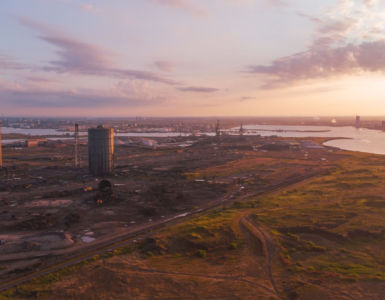blue hydrogen could become the white elephant on your balance sheet.
[Bloomberg] No investor, lender or company wants a white elephant sitting on their balance sheet. An asset that looked good at the time, but is now out of the money, rendered uncompetitive by operating costs that are higher than prices in the market. It’s every investor’s nightmare.Many oil and gas investors lived through this kind of nightmare in 2014, when the oil price crashed from over $100 to under $50 a barrel, and then stayed there for three years. Tens of billions of dollars worth of projects, built when prices were high – like Shell’s Curtis LNG and Santos’s Gladstone LNG – haemorrhaged cash until the oil price recovered.
Now imagine your billion-dollar asset is operating in a market where the commodity price is never likely to recover, because better technology has permanently undercut you. That could be the fate that awaits investors in so-called ‘blue’ hydrogen.
🔥 What about we co-host a webinar? Let's educate, captivate, and convert the hydrogen economy!
Hydrogen Central is the global go-to online magazine for the hydrogen economy, we can help you host impactful webinars that become a global reference on your topic and are an evergreen source of leads. Click here to request more details
Blue hydrogen is the friendly sounding moniker for hydrogen that is made from fossil fuels with the pollution controlled via the use of carbon capture and storage equipment. Blue hydrogen appears to hold two big advantages over its cleaner sibling, green hydrogen, or hydrogen produced from renewable electricity and water.
Those are cost and scale. But these apparent advantages are actually structural weaknesses masquerading as strengths.
How much a kilo?
First, cost. Blue hydrogen is cheaper to produce than its green equivalent. That’s because the underlying technology that strips hydrogen molecules from coal or gas is commercially mature, even though the carbon capture component is not.
In locations where natural gas is as cheap as $3-4 per million British thermal units, or MMBtu, such as the U.S. and Canada, blue hydrogen can theoretically be produced for under $2 per kilogram. By contrast green hydrogen costs over $4 per kilogram to produce in the same locations.
So where’s the elephant? It’s in the future cost curve. Although expensive, green hydrogen costs are expected to plummet by 75% by 2030 as manufacturing of its underlying technology – electrolyzers – rapidly scales up.
Chinese companies already sell electrolyzers for one quarter of the price they are sold for in Europe and the U.S. And companies like Chinese chemical giant Baofeng are already building electrolyzer-based projects that will produce hydrogen for $2.3/kilo.
The cost curve means that green hydrogen will be cheaper to produce than blue hydrogen from natural gas in any part of the world by 2030. Even in petrostates in the Middle East, where gas is just $1.5 per MMBtu, blue hydrogen will be outcompeted. Green hydrogen production costs should slide under $2/kg in almost every country by 2030, and then under $1/kg by 2050.
In comparison, blue hydrogen costs have little scope to fall. Even if the cost of carbon capture and storage equipment halves, the cost of producing blue hydrogen will fall by just 10% because most of the cost is in the fuel. Natural gas prices would have to fall to implausibly low prices, near zero, for blue hydrogen to cost $1 per kilogram.
Six years of peace
The consequence of this is that an investor that pours $500 million dollars into a blue hydrogen project today would have at most six years of operation before a green hydrogen project could be built next door and undercut it. That’s a frightening thought for a project that should operate for 30 years. The green hydrogen cost curve is, in short, a time-bomb for blue hydrogen.
So how about scale? The biggest blue hydrogen project today produces 900 tons of hydrogen per day, and a new project could basically be as big as you like. The biggest green hydrogen project under construction today will not even produce a twentieth of that.
But is bigger really better? For emerging technologies that are both risky and sub-economic, the answer is a resounding no. When it comes to building new industries, modular beats massive, because companies and investors don’t like to expose themselves to undue risk.
Companies that are piloting new energy technologies usually only put small amounts of cash on the line to start, and build up from there.
Spending about one million dollars for R&D on the first pilot plant is typical. If that was successful, circa $10 million becomes the next step, five years later, for a pre-commercial project.
Serious money in the hundreds of millions only typically gets spent and lent by banks once equipment costs and project execution risks are low enough for everyone to be confident the technology and the business case will work.
Green hydrogen technology fits this incremental profile of investment and deployment perfectly. One million dollars will buy you a tidy little pilot project, ten million a substantial one, and one hundred million would make you a world leader. One hundred companies doing that builds an industry.
Big is only option
With blue hydrogen, it is go big or go home. A typical project costs $500 million to build, and there is not much scope to go smaller – the technology only works at large scale. That’s an awful lot of risk to bear on a single project. Most companies won’t have the appetite for it.
Another problem is that demand for clean hydrogen at those scales doesn’t exist yet, and isn’t likely before 2030, by which time green will be cheaper. So the large-scale of blue hydrogen is actually a curse.
The cost time-bomb and large-scale curse mean the prospects for blue hydrogen developing as an industry don’t look good. There’s a very close parallel from recent history to support this view. Only a decade ago, carbon capture and storage was hailed as both the cheapest option for cleaner electricity generation and the only new technology that was capable of delivering at scale.
Solar photovoltaics looked like an expensive science experiment by comparison. But keen observers could see solar had a formidable cost curve, was modular and incrementally deployable. We know which technology has won that race.
These practicalities should give prospective investors in blue hydrogen serious pause for thought. Oil and gas investors should take caution too. Investors worried about the climate compatibility of new mega gas developments like Aramco’s Jafurah are often soothed by messages that gas will be used for blue hydrogen in the future. Thanks for staying up to date with Hydrogen Central.
Unless the operators are willing to sell their gas for free to compete with green hydrogen, this is clearly a smokescreen. Beware of the dream of blue hydrogen creating more nightmares than we might think.
Hihglights:
- Green hydrogen will be able to undercut price of blue by 2030
- Scale can be advantage for producers, but only for so long
Blue Hydrogen Could Become the White Elephant on Your Balance Sheet, December 15, 2022








